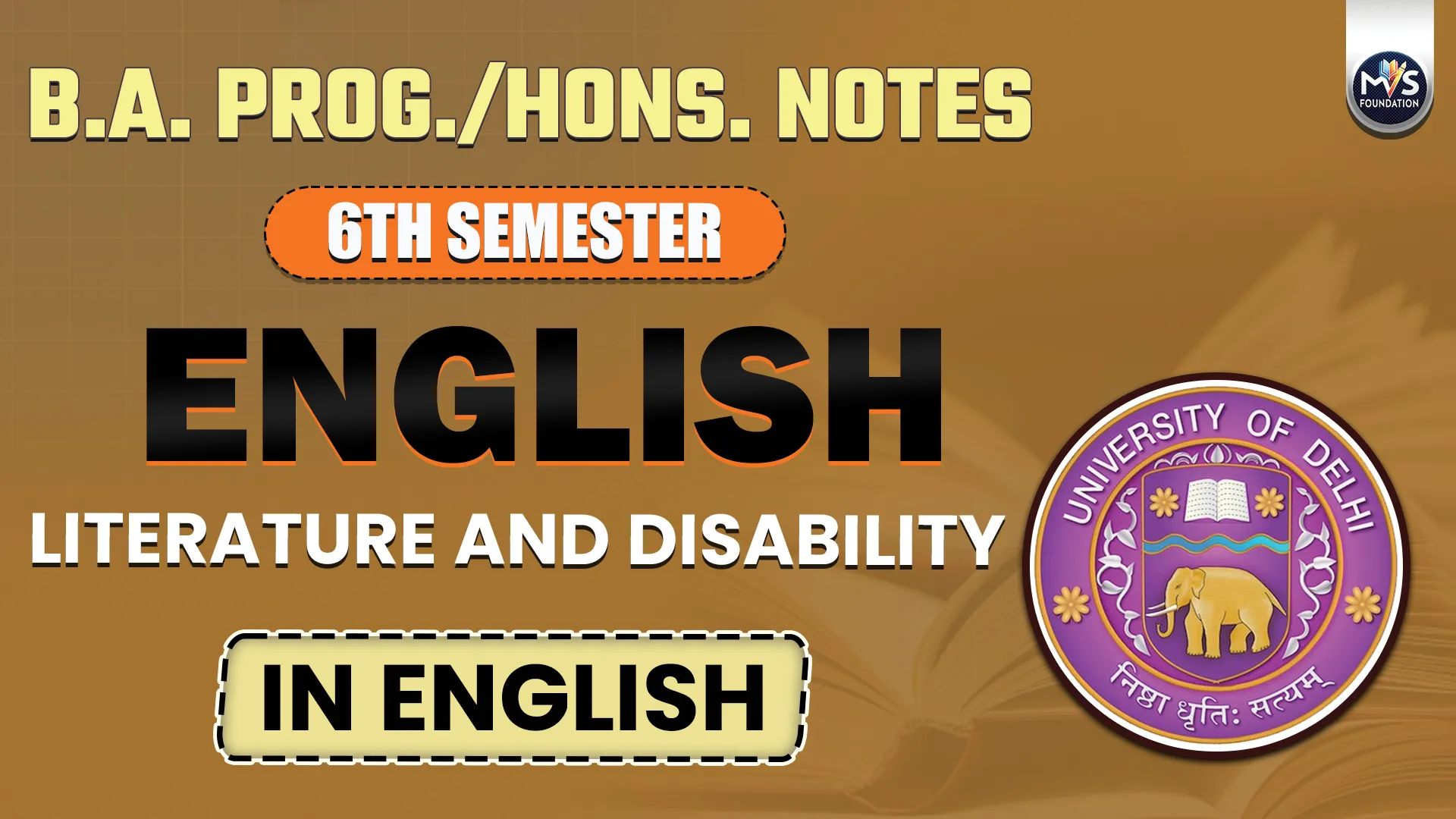
Get in Touch
We will get back to you within 24 hours.
Welcome to MVS Blog

Q1. Critically respond to the following lines from Firdaus Kanga's Trying to Grow: "I was scared of the way handicapped people looked. You know, the hesitant gait and robot-stiff movements of the blind, the lolling heads and strangulated speech of the spastics. Whenever I saw them I wondered if I seemed as ugly and pathetic. I'd shudder and turn my mind away."
Answer -
Introduction
“About The Author”
1. "I was scared of the way handicapped people looked."
Explanation:
These lines are spoken by Brit, the narrator and protagonist of Firdaus Kanga’s autobiographical novel Trying to Grow. Brit (the main character) is saying that he used to feel scared when he looked at other people with disabilities. This is not because he hated them but because their appearance reminded him of his own condition. It made him feel worried and afraid about how others might see him. This shows his inner fear and confusion. Even though he himself is disabled, he feels disturbed seeing others who are disabled, because it reflects his own image back to him. This fear shows how social attitudes toward disability shape self-image. People often think of disability as something sad or unfortunate, and Brit has unknowingly started to believe the same thing.
2. "You know, the hesitant gait and robot-stiff movements of the blind... the lolling heads and strangulated speech of the spastics."
Explanation:
Brit uses very strong and sometimes uncomfortable words to describe how other disabled people look or sound. For example, he says things like “robot-stiff” and “strangulated speech.” He is closely observing how different disabled people move and behave. First, he describes blind individuals who walk slowly and carefully step by step because they cannot see. Their movements are stiff and cautious, like robots, which shows how much effort goes into every step. Then, he shifts to talking about people with cerebral palsy (referred to as “spastics” in older terms). He notices their heads sometimes droop or move uncontrollably (“lolling heads”) and how their speech is often difficult to understand (“strangulated speech” suggests a strained or unclear voice). These vivid, uncomfortable images reflect how sharply he sees the struggles of others. But more than that, they show his fear he worries that people might see him the same way awkward, unnatural, or helpless.
3. "Whenever I saw them I wondered if I seemed as ugly and pathetic. I'd shudder and turn my mind away."
Explanation:
This is an important moment where Brit is thinking deeply about himself. He is not just thinking about what others are like; he is thinking about how others must see him. These lines show Brit’s deep emotional pain and self-doubt. When he sees others who are visibly different, he can’t help but wonder, “Do I also look this strange to others? Do people also feel uncomfortable when they see me?” He uses harsh words like “ugly and pathetic,” which reveal how low he sometimes feels about his own body not out of
hatred, but out of hurt. These words are very emotional and show how society often treats disabled people unfairly. Because of this, they can start to feel ashamed of themselves, even when they shouldn't. Brit is struggling with his identity. He wants to be seen as a normal and complete person. But he also knows that people often look at him with pity, or think he is different in a bad way. This moment shows the pain he feels from being treated this way.
When he says “I’d shudder and turn my mind away,” it shows his physical and emotional reaction. He feels a chill or discomfort not because he hates the other person, but because it painfully reminds him of how society might see him. So, he turns his mind
away not to ignore the person, but to protect himself from the emotional wound it opens.
❖ This entire moment is not about judging others. It’s about how deeply judged he feels, and how much it hurts. It’s not hatred it’s fear, sadness, and emotional exhaustion.
Conclusion:
Firdaus Kanga honestly shares the inner struggles of a disabled person through Brit’s thoughts. Brit doesn’t hate others like him, but seeing them reminds him of his own pain and fears. He feels judged, not because of his condition, but because of how
people treat him. His feelings reflect sadness, fear, and the need for acceptance.
0 Response